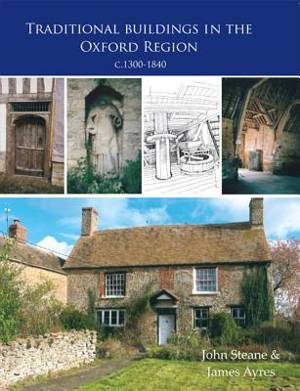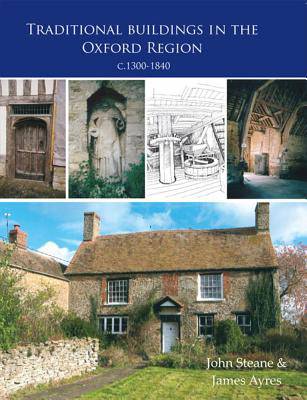
- Afhalen na 1 uur in een winkel met voorraad
- Gratis thuislevering in België vanaf € 30
- Ruim aanbod met 7 miljoen producten
- Afhalen na 1 uur in een winkel met voorraad
- Gratis thuislevering in België vanaf € 30
- Ruim aanbod met 7 miljoen producten
Zoeken
€ 62,95
+ 125 punten
Omschrijving
The pivotal position of the Oxford region in the geological and therefore building history of England is of fundamental importance to the study of traditional construction. Oxford occupies a central position on the ancient route between Northampton and Southampton and on the east - west road between London, The West Country, Wales and Ireland. For this reason, unusually for vernacular architecture, the buildings of the region were subject to a wide range of influences.
This book, the fruit of twenty years research, provides an account of vernacular architecture in the Oxford region from Anglo-Saxon times to the 19th century. It begins with a discussion of methods and procedures followed by a description of building materials, stone, brick, slate and thatch. This serves as an introduction to the heart of the book, eleven chapters dealing with surveys of cruck buildings, manorial and moated sites, town houses with particular emphasis on Abingdon, and houses in the countryside from farmhouses to cottages.
There are then chapters on fire hazards, public houses and public buildings. Several appendices are devoted to wall paintings, ferramenta, apotropaic marks, carpentry details, secrets under the floorboards, fireplaces, staircases and windows. The book is richly and profusely illustrated with over 500 illustrations, photographs, maps, and a particular strength, a large number of drawings of architectural details and sketch perspectives.
This book, the fruit of twenty years research, provides an account of vernacular architecture in the Oxford region from Anglo-Saxon times to the 19th century. It begins with a discussion of methods and procedures followed by a description of building materials, stone, brick, slate and thatch. This serves as an introduction to the heart of the book, eleven chapters dealing with surveys of cruck buildings, manorial and moated sites, town houses with particular emphasis on Abingdon, and houses in the countryside from farmhouses to cottages.
There are then chapters on fire hazards, public houses and public buildings. Several appendices are devoted to wall paintings, ferramenta, apotropaic marks, carpentry details, secrets under the floorboards, fireplaces, staircases and windows. The book is richly and profusely illustrated with over 500 illustrations, photographs, maps, and a particular strength, a large number of drawings of architectural details and sketch perspectives.
Specificaties
Betrokkenen
- Auteur(s):
- Uitgeverij:
Inhoud
- Aantal bladzijden:
- 463
- Taal:
- Engels
Eigenschappen
- Productcode (EAN):
- 9781842174791
- Verschijningsdatum:
- 29/11/2013
- Uitvoering:
- Hardcover
- Formaat:
- Genaaid
- Afmetingen:
- 218 mm x 279 mm
- Gewicht:
- 2154 g

Alleen bij Standaard Boekhandel
+ 125 punten op je klantenkaart van Standaard Boekhandel
Beoordelingen
We publiceren alleen reviews die voldoen aan de voorwaarden voor reviews. Bekijk onze voorwaarden voor reviews.











